
Cure Yourself
Secret Remedies & Wonder Foods
Table of Contents
List of Diseases :-
Acidity
Acne
Anaemia
Anorexia Nervosa
Arthritis
Asthma
Backache
Boils
Common Cold
Constipation
Cough
Diabetes
Diarrhea
Dysentery
Fever
Gout
Hair Loss
Headache
Hiccups
High Blood Pressure
Insomnia
Intestinal Parasites
Jaundice
Kidney Stones
Menopause
Nausea
Obesity
Piles / Haemorrhoids
Sore Throat
Stings & Insect Bites
Stomach Ache
Tonsillitis
Toothache
Urinary Tract Infections
Weakness
Wonder Foods – Spices / Herbs :-
Aniseed /Fennel
Asafoetida
Basil
Cardamom / Elaichi
Carom Seeds / Ajwain
Cinnamon
Clove
Coriander Seeds
Cumin seeds
Fenugreek Seeds
Mint
Mustard
Nutmeg
Saffron
Turmeric
Wonder Foods – Fruits :-
Apple
Apricot
Avocado
Banana
Blueberry
Grapefruit
Grapes
Guava
Lime
Mango
Orange
Papaya
Pineapple
Pomegranate
Pumpkin
Strawberry
Sugarcane
Tamarind
Tomato
Wonder Foods – Vegetables :-
Asparagus
Beetroot
Bitter Gourd
Bottle Gourd
Brinjal / Eggplant
Broccoli
Cabbage
Carrot
Cauliflower
French Bean
Garlic
Ginger
Mushroom
Onion
Potato
Radish
Red Pepper
Spinach
Wonder Foods – Pulses :-
Bengal Gram
Black Eyed Bean
Chickpea
Green Gram
Kidney Bean
Lentils
Soya Bean
Wonder Foods – Cereals :-
Brown Rice
Oats
Quinoa
Wheat
Wonder Foods – Dry Fruits :-
Almond
Cashew nut
Pistachio
Raisin
Walnut
Wonder Foods – Others :-
Honey
Milk
Top 5 Herbs that Help Support a Healthy Immune System
Turmeric
Myrrh
Frankincense
Echinacea
Astragalus
Introduction
My sincere thanks to you for taking the trouble to read this book.
Since a long time I wanted to write this one, but could not bring myself to focus on the task. I knew I would do it someday, but at the same time I also knew that the task was a huge one and it would take many months, for me, to complete the book. I used to get overwhelmed by the sheer magnitude of the project.
But, goaded on by my family and friends, my online readers and my website team, I final y decided to begin. Thus began a long and arduous journey. I started collecting my thoughts and put them down on paper.
After I managed to get the blueprint ready, began the process of collecting information. Hours, days and months were spent on this task, which resulted in a huge volume of data, which had to be scrutinized and edited.
My team and I spent many nights going through reams and reams of info and deciding what to retain and what to reject. After the content was finalized, my technical team swung into action to compile the entire content into a wel designed e-book, which I could present to you.

This e-book is all about natural health and natural remedies, and my intention is to stop you from running to the doctor at the slightest sneeze or rumbling in your stomach. Why not try and find out how to take care of minor ailments with whatever is available in your kitchen and refrigerator?
The natural healing powers of some common vegetables, fruits and spices are simply amazing. Mother Nature has gifted us with so many things which we are not aware of. This book is my humble attempt to bring you closer to her.
About the Author
I am Vaishali Parekh, a resident of Kolkata, India and a Graduate Nutritionist. My passion for health and nutrition and a natural love for cooking drove me to come up with the website www.indian-cooking.info in the year 2007.

I kept on developing related content for the site and gradual y my viewer base grew. Along with this growth, their list of demands kept growing too, which inspired me to come up with some radical y different and useful content which shall be a lifelong asset.
The result is this e-book.
Diseases
ACIDITY
Acidity is general y caused by an imbalance between the mechanism for secretion of acid in the stomach and the protective mechanism that ensures the stomach’s safety. The stomach secretes acidic fluid that helps in digestion. But when the secretion of acid exceeds the normal level, it results in a situation termed as acidity.

Causes :-
Inefficient digestive system
Excessive intake of alcohol
Empty stomach for a long time / skipping breakfast
Eating foods rich in fats like chocolates
Pregnancy
Ageing
Obesity
Eating junk foods, oily and spicy foods
Excessive exposure to sun and heat
Aspirin and anti-inflammatory drugs
Incompatibility of food
Excess acid secretion
Excessive smoking
Causes :-
Gastro duodenal (peptic) ulcer
Hyper secretion of hydrochloric acid
Reflux of gastric acid
Negative emotions
Weakness of the valves
Symptoms :-
Chest pain
Vomiting
Coughing
Heartburn
Dyspepsia
Belching
Nausea
Pain in the ears
Inflammation in chest
Respiratory problems
Gastro-esophageal reflux
Voice change and formation of ulcer in esophagus (tube connecting mouth and stomach)
Pain during muscular contractions
Burning sensation or pain in the stomach after one to four hours of a meal
Feel hungry frequently
Constant pain in upper abdomen
Bitter taste in mouth
Loss of appetite
Foods to Avoid :-
û Alcohol
û Pickles
û Cabbage
û Radish
û Fried food
û Smoking
û Non-veg diets
û Spicy, salty and acidic food
û Onion
û Steroidal drugs
û Pepper
ü Amaranth
ü Fresh coconut
ü Apple
ü Fresh peas
ü Asparagus
ü Fresh vegetable juices
ü Banana
ü Garlic
ü Brazil nuts
ü Green beans
Foods to Eat :-
ü Buckwheat
ü Millet
ü Carrots
ü Parsley
ü Celery
ü Sprouted Beans and seeds
ü Chestnuts
ü Watermelon
Remedies :-
◊ Drinking 3 tbsp white onion juice with 1 tbsp sugar and ½ cup curd helps to reduce acidity.
◊ Eating pineapple with sugar and pepper powder also reduces acidity.
◊ Consuming 1 tsp Indian gooseberry (amla) juice mixed with 11 gms of soaked and crushed black currant and ½ a tsp honey also helps to reduce acidity.
◊ Drinking chil ed ¼ cup milk with ½ cup water relieves acidity.
◊ Consumption of chutney made with dry mangosteen, cardamom and sugar gives relief from acidity.
◊ Drinking ½ ltr of water mixed with ½ a tsp of sugar and juice of 1 lemon, ½ an hour before lunch, also reduces acidity.
◊ Eating a tsp of coriander powder mixed with ½ a tsp of sugar after meals also relieves you of acidity.
◊ Drinking carrot juice also works wonders in curing acidity.
◊ Mix powder of 4-5 pepper corns slowly roasted in ghee with 100 ml of milk and a little sugar and then drink it to reduce acidity.
◊ Consume 5-6 basil leaves with 1 cup curd or a glass of buttermilk to reduce acidity.
◊ Coriander powder and dry ginger powder mixed in equal quantities, and taking a teaspoon of this mixture reduces acidity.

ACNE
Acne is a skin disease caused by changes in the pilo-sebaceous units(the unit consists of the hair shaft, the hair follicle, the sebaceous gland which makes sebum, and the erector pili muscle which causes hair to stand up when it contracts) of a person. It usual y strikes during adolescence but rarely continues till adulthood.
Commonly referred to as pimples, blemishes, spots and zits, acne lesions general y occur on the face, neck, chest, back, shoulders and upper arms.
It may range from being mild and moderate to a severe form. While an increase in sex hormones, during puberty, is the leading cause for acne, there are other factors as well that add to its occurrence.
Causes :-
Vitamin deficiency
Over-activity of sebaceous glands
Fol icle fal out
Bacterial infection
Inflammation
Sluggish liver
Alcohol
Hereditary factors
Taking too much stress
Misuse of drugs
Hormonal imbalances
Glucose intolerance
Smoking
Essential fatty acid deficiency
Foods like pizza, chocolate, and fried items
Cosmetics that are pore-clogging
Pressure from helmets, chinstraps, col ars, suspenders, etc
Exposure to industrial products, like cutting oils
Environmental irritants, such as pol uted air and high humidity
Squeezing or picking at blemishes
Hard scrubbing of the skin
Change of hormonal levels in women, mainly before, during and after menses
Congested colon and constipation
Food allergies and food sensitivities, especial y to milk
Medications that contain bromides, iodides or steroids
The contraceptive pill can improve acne for some, but worsen for others, depending on the balance of estrogen and progesterone in the brand of the pill
Symptoms:-
Greasy skin
Blackheads
Cysts
Scars
Nodules
Papules
Whiteheads
Red or yel ow spots (pustules)
Deep, inflamed lesions
Pimples on the face and upper torso
Foods to Avoid :-
û Alcohol
û Pasta
û Butter
û Pork
û Cheese
û Processed grains
û Chips
û Red meat
û Coffee
û Salami
û Cookies
û Sausage
û Cream
û Soya sauce
û Deep fried food
û Sugary and carbonated
û Ham drinks
û Ice cream
û Tea
û Liver
û Vinegar
û White breads
Foods to Eat :-
ü Apricots fresh or dried
ü Lean red meat
ü Avocado
ü Mango
ü Cantaloupe melon
ü Multi-Grain Breads
ü Carrots
ü Oatmeal
ü Cherries
ü Oranges
ü Chicken
ü Plantain
ü Egg
ü Pomegranate
ü Flaxseed
ü Salmon
ü Grapefruit
ü Skim or 1% milk
ü Green tea
ü Walnut
ü Guava
ü Watermelon
Remedies :-
◊ Mix equal quantities of glycerin, rose water and lime juice and store it in a bottle. Massage with this liquid daily on all the exposed parts of skin to get a glow in a very short time.
◊ To get a glow on the skin, mix a little curd with radish juice and massage with this mixture daily.
◊ To get a soft and glowing skin, squeeze the juice of a whole lime in a bucketful of warm or cold water and then bathe with it.
◊ To cure any kind of old skin diseases apply bitter gourd juice on the skin, let it dry for few minutes and then take a bath.
◊ To bring a glow, apply sesame seed oil daily.
◊ To get a wrinkle free skin, apply cucumber juice, let it dry and then wash it off.
◊ To get a blemishes free skin, dry a few orange peel, make a powder and make a paste by mixing little rose water, apply this on face, let it dry, and then wash it off with cold water.
◊ In cases where there are cracks in legs and hands or even prickly heat, mix 1 portion of lemon juice with 3 parts of sesame oil or coconut oil and apply it to the affected parts.
◊ To get a fairer and glowing skin, mix little water and ghee with gram flour and apply during bath, instead of soap.
◊ In cases of scars left over after burns, apply coconut oil regularly over the scars.
◊ To cure many skin diseases like irritation, boils and scars mix 20-22 gms honey with cold water and drink it daily in empty stomach.
◊ To get a beautiful and glowing skin, mix water with which rice has been washed; with turmeric powder, apply just before bathing.
◊ Apply malai (fresh cream) on the face half an hour before bathing, scrub it off with hands on drying and then wash it off to get a beautiful and glowing skin.
◊ To make skin soft, scrub raw potato peel over the skin.
◊ To unclog the pores and to get a glowing skin, scrub used lime peel for few minutes on the skin.
◊ To get a fair and beautiful skin mix amla (Indian gooseberry) powder with turmeric powder and milk and apply it and wash it after drying. Repeat this process daily for a few months.
◊ Boil 1 litre of water til it reduces to half, and then mix equal quantities of glycerin and lime juice, mix thoroughly and store it in a bottle. Wash your face with this liquid 2-3 times in a day. It keeps your skin cool in the summer and prevents it from drying in winter.
ANAEMIA
Anaemia is a decrease in the normal number of red blood cel s (RBCs) or less than the normal quantity of haemoglobin in the blood. However, it can include decreased oxygen-binding ability of each haemoglobin molecule due to deformity or lack of numerical development as in some other types of haemoglobin deficiency.
Anaemia is the most common disorder of the blood. There are several kinds of Anaemia, produced by a variety of underlying causes. Anaemia can be classified in a variety of ways. The three main classes of Anaemia include excessive blood loss, excessive blood cell destruction and deficient red blood cell production.
Causes :-
Blood loss
Decreased or faulty red blood cell production
Destruction of red blood cells
Hereditary disorders
Poor absorption of iron, low stomach acid and a vegan diet, as B12 is mainly found in animal foods such as fish, meat and eggs
Symptoms :-
Lack of energy
Dizziness
Indigestion
Poor bodily repair
Edema
Constipation
Loss of appetite
Depression
Poor hair condition
Cold hands and feet
Breathlessness on exertion
Reduced muscular strength
Increased susceptibility to infections
Yel ow tinge to the skin
A red, beefy and sore tongue
Bleeding under the skin
Weak heartbeat and numb feet
Brittle and ridged finger nails
Foods to Avoid :-
û Alcohol
û Rhubarb
û Beer
û Smoking
û Bran
û Soft drinks
û Chocolate
û Sorrel (a herb)
û Ice cream
û Tea and coffee
Foods to Eat :-
ü Almonds
ü Haricot beans
ü Apples
ü Iron-fortified cereals
ü Asparagus
ü Kidney beans
ü Baked beans
ü Lean, red meat
ü Bananas
ü Lemons
ü Beef liver
ü Lentils
ü Black-eyed peas
ü Oatmeal
ü Brazil nuts
ü Oranges
ü Broccoli
ü Oysters
ü Brussels sprouts
ü Peas
ü Butter beans
ü Pinto beans
ü Cantaloupe
ü Plums
ü Carrots
ü Poultry
ü Cashew nuts
ü Raisins
ü Chickpeas
ü Romaine lettuce
ü Col ard greens
ü Sesame seeds
ü Dried fruit
ü Spinach
ü Figs
ü Tomatoes
ü Fish
ü Walnuts
ü Ginger
ü Wheat germ
ü Grapes
ü Whole grain cereals
ü Green, leafy vegetables
Remedies :-
◊ Avoid drinking tea and coffee immediately after meals as the tannin present in these interferes in the absorption of iron from food.
◊ Take freshly prepared apple juice just before going to bed or half an hour before a meal. For proper absorption of the juice, stomach should be relatively empty and do not take anything for at least next 30 minutes.
◊ Beetroot juice is an excel ent remedy for Anaemia. Apple may also be added to the juice.
◊ Mix 1 tbsp amla juice with a ripe mashed banana and eat 2-3 times a day.
◊ Have a ripe banana with 1 tbsp of honey, 1-2 times a day.
◊ Soak 10-12 currants in water overnight. Remove seeds and eat them. Have this for 2-4 weeks.
◊ Try to have at least 100 gms of green leafy vegetable like spinach, lettuce, celery, fenugreek everyday, raw or cooked.
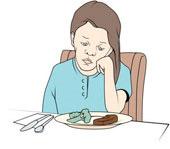
ANOREXIA NERVOSA
Anorexia nervosa is characterized by an irrational fear of becoming fat coupled with a relentless pursuit of thinness. People with anorexia go to extremes to reach and maintain a dangerously low body weight. But no matter how much weight is lost, no matter how emaciated they become, it’s never enough. The more the scale dips, the more obsessed they become with food, dieting, and weight loss.
The key features of anorexia nervosa are:
• Refusal to sustain a minimal y normal body weight.
• Intense fear of gaining weight, despite being underweight.
• Distorted view of one’s body or weight, or denial of the dangers of one’s low weight.
Causes :-
Dissatisfaction with own body
Dieting
Low self-esteem
Obsession with perfectionism
Childhood sexual abuse
Family history of eating disorders
Genetics
Causes :-
Individual personality traits
Family environment
Participation in activities like bal et, gymnastics etc
Symptoms :-
Dieting despite being thin
Obsession with calories, fat grams, and nutrition
Pretending to eat or lying about eating
Preoccupation with food
Strange or secretive food rituals
Loss of menstrual periods
Lack of energy and weakness
Feeling cold all the time
Dry, yel owish skin
Constipation and abdominal pain
Infertility
Stunted growth
Osteoporosis
Heart problems
Kidney failure
Depression
Dramatic weight loss
Feeling fat, despite being underweight
Fixation with body image
Harshly critical of own appearance
Denies being too thin
Using diet pill s, laxatives, or diuretics
Throwing up after eating
Compulsive exercising
Restlessness and insomnia
Dizziness, fainting, and headaches
Growth of fine hair al over the body and face
Severe mood swings
Thoughts of suicide
Tooth and gum decay
Foods to Avoid :-
û Alcohol
û Refined sugars, such as
û candies
Caffeine
û Soft drinks
û Tobacco
Foods to Eat :-
ü Avocados
ü Oat cakes
ü Bananas
ü Pulses
ü Brown rice
ü Pumpkin seeds
ü Herring
ü Quinoa
ü High carbohydrate foods
ü Sesame seeds
ü High fat foods
ü Smoothies
ü High protein foods
ü Sunflower seeds
ü Legumes
ü Watercress
ü Miso soup
ü Wheat germ
ü Nut butters
Remedies :-
◊ Eating crushed ginger a few minutes before meals will increase appetite.
◊ Drinking mint juice with rock salt also helps to increase hunger.
◊ Mixing rock salt, ½ a tsp carom seeds powder (ajwain powder) and lime juice (sweet) does increase hunger.
◊ To increase appetite and hunger, mix lime juice and honey with lukewarm water and drink it daily.
◊ Chewing ½ a tsp of ajwain seeds twice daily also increases appetite.
◊ Eating a tsp of mustard powder with water also helps.
Remedies :-
◊ Eating pineapple with pepper powder and rock salt also helps a lot.
◊ Sprinkle a little rock salt over ½ a lime and the suck the juice a little before meals.
◊ Taking ¼ tsp asafoetida with ½ tsp ghee also increases appetite.
◊ Mix onion juice with asafoetida and salt and then drink it.
◊ Let the finely chopped garlic crackle in oil and then eat it; or make a paste of it and have it with your meals.
◊ Boil 4-5 dry mangosteen in 1 cup water and drink this water with ghee.
~ ~ ~ ~ ~
ARTHRITIS
The literal meaning of arthritis is “joint inflammation” and it can affect joints in any part of the body. When you have arthritis, damage is caused to a lesser or greater degree to the joints and mostly occurs in the hands, arms and legs. The inflammation in one or more of the joints results in pain, swelling and limited movement.
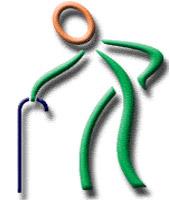
Causes :-
Broken bone
Infection in the area (usual y caused by either bacteria or viruses)
An autoimmune disease (this is where the body attacks itself because the immune system perceives a certain body part to be foreign)
General wear and tear of joints (possibly from old age, over exercise etc.)
Injury (leading to osteoarthritis)
Metabolic abnormalities (such as gout and pseudo gout)
Hereditary factors
Infections
Certain unclear reasons (such as rheumatoid arthritis)
Hormonal imbalance
Emotional stress
Structural changes in the particular cartilage of any joint
Physical exertion
Severe fright
Shock
Obesity
Ageing
Previous physical injuries
Occupational hazards, such as those experienced by assembly
line workers and heavy construction
High-level sports
Symptoms :-
Anaemia
Colitis
Constipation
Weak digestion
Intermittent fever
Loss of appetite
Fever
Overeating
Weight loss
Fatigue
Feeling unwel
Joint pain and swel ing
Stiffness particularly in the mornings
Abnormalities of organs such as the lungs, heart, or kidneys
A feeling of warmth around a joint
Redness of skin around an affected joint
Stiffness in the joints
Deformed hands and feet
Inflammation of muscles, ligaments and cartilage
Painful movement of the joints, especial y in cold, windy and damp weather
Very little physical activity
Blotchy rash on the arms and legs
Inability to move the joints easily
Tenderness of the inflamed joint
Gland swelling (lymph node)
Foods to Avoid :-
û Beans
û Fried foods
û Biscuits
û Meat
û Cakes
û Pastry
û Chocolate
û Preservatives and additives
û Coffee
û Tea
û Dairy products
û Tomatoes
Foods to Eat :-
ü Almonds
ü Mango
ü Apples
ü Onion
ü Asparagus
ü Oranges
ü Avocado
ü Papaya
ü Banana
ü Peach
ü Beetroot
ü Peas
ü Blueberries
ü Peppers
ü Brazil nuts
ü Pineapple
ü Broccoli
ü Plums
ü Button mushrooms
ü Pumpkin seeds
ü Cantaloupe
ü Sardines
ü Carrots
ü Sockeye salmon
ü Cauliflower
ü Spinach
ü Celery
ü Squash
ü Cherries
ü Strawberries
ü Col ards
ü Sunflower seeds
ü Ginger
ü Sweet corn
ü Grapefruit
ü Sweet potato
ü Grapes
ü Turmeric
ü Green vegetables
ü Walnuts
ü Herring
ü Whole or cracked grains
ü Kiwi Fruit
ü Winter squashes
ü Linseeds
Remedies :-
◊ A gentle massage with olive oil wil give a lot of relief.
◊ Take equal amounts of water and freshly extracted potato juice and drink it daily.
◊ Rub the aching joints with hot vinegar just before going to bed.
◊ Take 10 gms of camphor and put it in a glass bottle fil ed with 100 gms of mustard oil. Keep this bottle in the sun til the camphor dissolves. Apply this oil in the joints daily.
◊ A teaspoon of black sesame seeds, soaked in a quarter cup of water and kept overnight, has been found to be effective in preventing frequent joint pains. The water in which the seeds are soaked should also be taken along with the seeds first thing in the morning.
◊ Drinking water kept overnight in a copper container accumulates traces of copper, which is said to strengthen the muscular system. A copper ring or bracelet is worn for the same reason.
◊ Garlic is another effective remedy for arthritis. Garlic may be taken raw or cooked according to individual preference.
◊ Bananas, being a rich source of vitamin B6, have proved useful in the treatment of arthritis. A diet of only bananas for three or four days is advised in treating this condition. The patient may eat eight or nine bananas daily during this period and nothing else.
◊ A green gram soup should be prepared by mixing a tablespoon of green gram in a cup of water, with two crushed garlic cloves.
It should be taken twice a day.
◊ Add one tablespoon of cod liver oil to the juice of one orange, whip and drink before going to bed.
~ ~ ~ ~ ~
WONDER FOODS
Wonder Food : Spices

ANISEED / FENNEL
For centuries, people wanting to lose weight and stay young ate fennel seeds. However, fennel seeds are most effective as a digestive agent – settling the stomach, relieving colic and wind, and easing indigestion and heartburn. It can also boost your appetite.

Tea made with a few fresh sprigs of fennel or a level teaspoon of seeds wil relieve indigestion. An infusion of the seeds is an excel ent carminative, especial y for babies.
Fennel is an effective treatment for respiratory congestion and is a common ingredient in cough remedies. An essential oil is often extracted from the seed for medicinal use, though it should not be given to pregnant women.

Ingredients :-
ü Butter – 50 g
ü Salt and Pepper – to taste
ü Baby fennel bulbs – 12
ü Balsamic vinegar – 1 tbsp
ü Water – 150 ml
ü Cheese, grated – 3-4 tbsp
ü Juice of 1 lemon
Method :-
◊ Melt butter in a large pan. When it stops foaming, add trimmed and halved fennel bulbs lengthways.
◊ Sauté gently for 2 minutes on each side until light golden.
◊ Add water and lemon juice. Add salt and pepper, bring to boil, cover and simmer for 20 minutes or until the fennel is tender.
◊ Add vinegar and increase the heat to reduce the liquid by half.
◊ Remove the pan from the heat. Add the cheese. Allow the cheese to melt.
◊ Serve hot.

Ingredients :-
ü Aniseed powder – 1 cup
ü Cardamom powder – of 4-5
ü Sugar Powder – ¾ cup
Method :-
◊ Mix al the ingredients together and sieve and store it in the refrigerator.
◊ Whenever required, add 2-3 tsp of the powder to 1 glass of cold water and serve.
◊ It is a great coolant in the hot summer.
◊ Drinking it everyday just before going out in the sun will prevent you from getting affected by the warm winds.
~ ~ ~ ~ ~
ASAFOETIDA
Asafoetida is dirty yellow in color with a pungent smell.
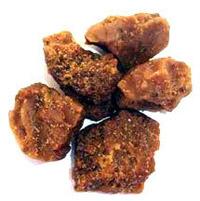
It is extensively used in the treatment of nervous disorders of children. There is an old European belief that a small piece of this gum, hung around a child’s neck, would protect it from many diseases, especial y germs which are sensitive to its particular odor.
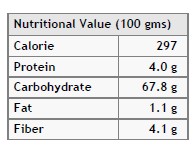
It is useful in respiratory conditions like whooping cough, upper respiratory tract infections where congestion is a problem, asthmatic attacks and bronchitis. One ayurvedic school of thought has recommended asafoetida in classical hysteric attacks. It is also an effective remedy for toothache. In general it helps in preventing dental caries or at least in relieving pain due to caries.
Asafoetida is considered useful in the treatment of several problems concerning women such as sterility, unwanted abortion, pre-mature labor, unusual y painful, difficult and excessive menstruation and leucorrhoea. It is also beneficial in the treatment of impotency.
Asafoetida is known to Indian society from ages and is widely used as flavouring agent in Indian recipes. It is considered as a safe home made remedy for digestive disturbances until one sees the doctor. In short, asafoetida is a medicinal gum of the plant used in stomach disorders like nausea, anorexia and flatulence. Taken internal y or applied external y it helps in relieving distention of abdomen due to improper digestion or gases.

Recipe : Moong Dal Hing Kachori
Nutritional Value (approx.)
Energy
Protein
Carbohydrate
Fat
1060
55 g
215 g
15 g
Ingredients :-
ü Moong Dal (cooked) – 1 cup
ü Cumin Seeds – ½ tsp
For Fil ing:
ü Aniseeds – ¼ tsp
ü Green chilies (minced) – 3
ü Mango powder – ½ tsp
ü Mint leaves – 4-5
ü Turmeric powder – ½ tsp
ü Coriander leaves chopped
ü Garam Masala – 1 tsp finely – 2 tbsp
ü Chili Powder – 1 tsp
ü Curry leaves – 1 sprig
For the Covering (dough):
ü Salt – to taste
ü Refined Flour – 1 ½ cup
ü Shredded Ginger – 1 tsp
ü Ghee – 2 tbsp
ü Ghee – 2 tbsp
ü Salt – to taste
ü Asafoetida – 1 tsp
ü Oil/Ghee – for deep frying
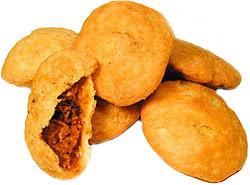
Method :-
◊ Knead a soft pliable dough and set aside.
◊ Take half the quantity of cooked dal and mash it and keep half of the dal aside.
◊ Melt the ghee and fry the green chilies, mint, coriander leaves, and curry leaves, then add the cumin seeds and aniseeds and fry till it splutters.
◊ Add the mashed dal, and the whole dal, garam masala, mango powder, turmeric powder, chili powder, salt and fry on low heat till dry.
◊ Remove and set aside to let it cool.
◊ In the meantime heat up the oil/ghee in a wok for frying.
◊ While it is getting hot, make small puris, putting a tbsp of the dal mixture in the center and gathering the ends of the circle and firmly pressing the gathering, and then slightly flatten with palm and deep fry til golden brown.
◊ Serve with chutney or sauce.
~ ~ ~ ~ ~
BASIL
The herb Basil is used in cooking universal y, and also for medicinal purposes. It’s a great herb and everyone should consider using it in their diet.
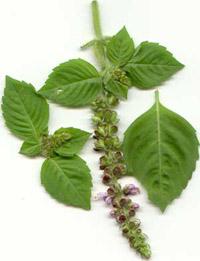
Jews believe (an enduring belief) that eating basil provides strength when fasting. It is used as tonic for the skin, a treatment for all kinds of colds, bronchitis, and coughs. It is used to treat gas attacks, flu, gout, muscle
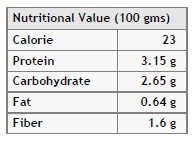
In West Africa it is used to reduce fevers and the Japanese use it as a cold remedy. As basil is both aromatic and carminative, it is used for mild nervous disorders and even for the al eviation of fibromyalgia(wandering body pains). It is said, the dried leaves used as a snuff, can cure nervous headaches. In traditional Ayurvedic medicine, a variety of Indian basil has been used to treat many common ailments, and naturopathic physicians may prescribe it in the treatment of diabetes, respiratory disorders, impotence, allergies and infertility.
Basil is also known to have extremely powerful antioxidant properties, especial y when it is used in the form of an extract or oil. The natural antioxidants found in basil can protect the body against damage from free radicals, thereby preventing cellular ageing, common skin ailments, and even most forms of cancer. Antioxidants are an important part of maintaining a healthy diet and lifestyle, and basil may be a safe and effective source of these potent, life-giving compounds.
Basil is not only a herb that does you good, it also tastes good, so make sure you get plenty in your diet.
Recipe : Tulsi Ka Kadha

Nutritional Value (approx.)
Energy
Protein
Carbohydrate
Fat
35
2 g
11 g
1 g
Ingredients :-
ü Water – 1 glass
ü Cardamom, slightly crushed
ü Basil Leaves – 10-12 pieces
ü Ginger, grated – ½ inch
ü Bay leaf – 1
ü Cinnamon – 1 inch
ü Honey or Jaggery – to taste
ü Clove -2
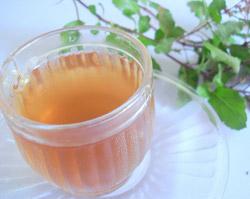
Method :-
◊ Mix al the ingredients together and boil til the mixture reduces to half.
◊ Strain and drink it warm.
~ ~ ~ ~ ~
CARDAMOM / ELAICHI
Cardamom too, is used for cooking as well as for medicinal purposes. It is used in a variety of dishes and is used to treat the teeth and gums just like clove is used. However, it is also used to treat throat problems, pulmonary tuberculosis and inflammation of
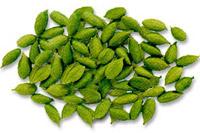
Nutritional Value (100 gms) eyelids, lung congestion and digestive Calorie 311
disorders. It is also used to develop an Protein
10.76 g
antidote for venom of snakes and scorpions.
Carbohydrate
68.47 g
In traditional medicine, it has been used for Fat
6.7 g
Fiber
28 g
treating constipation, dysentery, stomach aches and other types of digestive problems. It will serve as an excel ent diuretic for the treatment of gonorrhea, cystitis, nephritis, burning micturation or urination and scanty urination. This can be used as a remedy for the treatment of depression. The herb is useful in sexual dysfunctions like impotency and premature ejaculation. But excessive use of cardamom at times may lead to impotency.
Gargling with an infusion of cardamom and cinnamon cures pharyngitis, sore-throat, relaxes uvula, or the fleshy conical portion at the back of the tongue, and hoarseness during the infective stage of influenza. Indeed, cardamom is a herb that is widely used in foods as wel as it is a remedy for a number of stomach and respiratory tract ailments.
Cardamom is the only versatile herb that gives a cooling effect if used in any preparation in summer and gives a warm effect in winter.
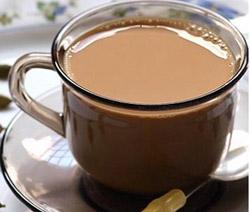
Recipe : Elaichi Tea
Nutritional Value (approx.)
Energy
Protein
Carbohydrate
Fat
104
8 g
13 g
2 g
Ingredients :-
ü Milk – 1 cup
ü Tea leaves – as desired
ü Water – 1 cup
ü Cardamom, slightly crushed
ü – 2-3
Sugar – to taste
Method :-
◊ Mix all the ingredients together.
◊ Boil for 2-3 minutes till you get the desired color.
◊ Strain and serve hot.
Wonder Food : Fruits
APPLE
It was said long ago, ‘to eat an apple before going to bed will make the doctor beg his bread’. The modern version of this ancient saying, ‘an apple a day keeps the doctor away’, sums up the healthful and nourishing qualities of apples. Apples are invaluable for the maintenance of good health and in the treatment of many ailments.
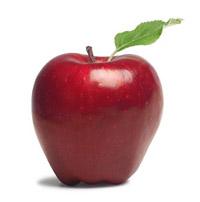
Apples detoxify the body and have an Nutritional Value (100 gms)
antiviral property. Apples are known to Calorie
354
remove weakness and add vigour and Protein
7.83 g
vitality. It is, therefore, often given to Carbohydrate
64.93 g
patients to help them recover fast from their Fat
9.88 g
Fiber
21.1 g
illness. It lowers cholesterol and risk of cancer. Has mild antibacterial, anti-viral, anti-inflammatory estrogenic activity. High in fiber, helps avoid constipation, suppresses appetite. Juice can cause diarrhea in children.
The cancer fighting qualities contained in a fresh, unpeeled apple are impressive. There are numerous studies whose findings are promising to anyone seeking to prevent or treat cancer.
Lung cancer was not the only form of cancer worked on by apples. Many of the studies previously cited proved apple’s value with other forms of cancer as wel . Among these are; prostate cancer, colon cancer, breast cancer and leukemia. A list of known biological activities associated with apples include: anticancer, antileukemic, antimutagenic, antimetastic, antineoplastic (stomach), antiproliferant and antitumor and acts specifical y on the skin, pancreas, stomach, breast and bladder.
In addition to important cancer fighting constituents, apples aid the digestive system and related diseases. First of al , apples fight obesity.
The fiber in the form of pectin is just one factor that affects weight. The pectin has an amphoteric action. This means it is either laxative or antidiarrheal, according to the body’s needs.
Pectin can interfere with the body’s ability to absorb dietary fats. Obesity is a huge factor in Type II diabetes. Blood sugar is also a factor. Pectin aids in the reduction of blood sugar. So, in addition to apple’s antiobesity, nutritive and digestive qualities, is revealed its antidiabetic action.
The malic acid in an apple is beneficial for the bowels, liver and brain.
Apples are cleaners. Among some of the reported actions are benefits for those exposed to radiation. It has been reported that apples are beneficial in binding radioactive residues and helping to excrete them from the body. Apples can also help remove toxic metals like lead from the body.
Maybe one of the most important cleaning actions provided by apples has to do with cholesterol. The pectin, as wel as other constituents, plays a role in reducing bad cholesterol in the body. This is good news for blood vessels and the heart. Because apple is also a hematic, it can build blood as wel as cleanse it.
A reduced risk of cardiovascular disease has been associated with apple consumption. This same study showed apple’s constituents to have an effect on cerebrovascular health. The apple provides antioxidants for the body. Oxidative damage on cell s by free radicals contributes to age related brain disorders. Alzheimer’s and senility are examples. Apples have been cited as antialzheimerian.
The apple also contains qualities that help prevent the eye and nerve damage associated with diabetes.
Most of the apples medicinal qualities treat chronic il ness. ‘An apple a day’ is an important adage to fol ow in order to enjoy its effects in these areas. There are many more benefits inherent in an apple. One source cites; Antianaemic, antibacterial, anti-inflammatory, antimenopauseal, antiCrohn’s, antiedemic, anti PMS, antiseptic, antiyeast, antiviral, capil ary protective, hepatoprotective, diuretic, fungicide, nematicide (round worms), and neuroprotective are a few not mentioned before. Stil other sources assign tonic, astringent, disinfectant, cardiac stimulant and cephalic.
Recipe : Apple Streusel Pie
Nutritional Value (approx.)
Energy
Protein
Carbohydrate
Fat
3797
46 g
640 g
124 g
Ingredients :-
ü Baking or pie apples – 8
For the pie crust
ü Sugar – 1 cup
ü Whole wheat flour – 1 cup,
ü mixed with white flour – ½
Cinnamon – 1 tsp cup
ü Pie crust – 1 deep-dish
ü Salt – ½ tsp
ü Flour – ¾ cup
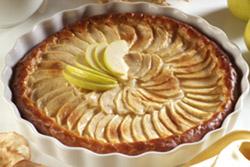
Ingredients :-
ü Margarine – ½ cup
ü Butter – ½ -cup
ü Cold milk or water -5 tbsp
Method :-
Method for Pie Crust
◊ Sift flours and salt together; use all the bran that is sifted.
◊ Crumb the butter into the flour; rub in until it becomes crumbly.
◊ Add liquid a spoonful at a time, mixing and pressing together until dough is moist enough to hold together.
◊ This makes a 2-crust pie.
◊ Halve the quantity if base of pie only is required.
Method for the pie:
◊ Pre-heat the oven to 180°C / 350°F.
◊ Peel and slice the apples and place in a large bowl.
◊ In a small bowl, mix ½ cup of the sugar and cinnamon. Add to the apples until they are coated.
◊ Put the apples in the pie crust.
◊ Mix the remaining ½ cup sugar, the flour and margarine until crumbly. Add a small amount of flour if necessary until small crumbs form.
◊ Sprinkle the crumbs over the pie, covering completely.
◊ Garnish with apple slices.
◊ Bake for 40 minutes until slightly browned.
~ ~ ~ ~ ~
APRICOT
Throughout the centuries, the fruit, kernels, oil and flowers of the apricot have been used in medicine. In China, a famous medicine known as ‘Apricot Gold’ was made from the kernels of trees which grew in certain areas.
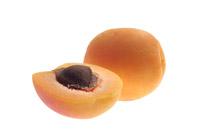
This medicine was reputed for its powers to
Nutritional Value (100 gms)
prolong life. The Chinese also believed that Calorie
48
Protein
1.4 g
apricots reacted sympathetical y to women’s Carbohydrate
11.12 g
ailments. The apricot flowers, therefore, Fat
0.39 g
formed a common ingredient in their Fiber
2 g
cosmetics.
The kernel, which yields oil similar to that of the almond, has been widely used for their sedative, antispasmodic (which gives relief to strained muscles) and demulcent or soothing properties. They are useful in the healing of wounds, in expel ing worms and as a general tonic.
The fruit is highly valued as a gentle laxative and is beneficial in the treatment of constipation. Patients suffering from chronic constipation can greatly benefit by the regular use of apricots.
Apricots have an alkaline reaction in the system. They aid digestion, if consumed before a meal. Marmalade, made from organically grown fruit, is also valuable in the treatment of nervous indigestion.
The apricot is an excellent food remedy for anaemia on account of its high content of iron. The small but essential amount of copper in the fruit makes iron available to the body. Liberal use of apricots could also increase the production of haemoglobin in our body.
Fresh juice of apricots, mixed with glucose or honey, is a very cooling drink during fevers. It quenches thirst and eliminates the waste products from the body. It tones up the eyes, stomach, liver, heart and nerves by supplying vitamins and minerals. Fresh juice of apricot leaves is useful for treating skin diseases. It can be applied with beneficial results in scabies, eczema, sun-burn and itching of the skin due to cold exposure.
Apricot seeds, because of their remarkably high content of amygdalin, are a source of vitamin B17 and utilized in alternative medicine for cancer therapy. It has to be underlined, however, that the seeds must be baked prior to direct consumption, since apricot kernels can be poisonous if ingested raw in large quantities.
It prevents plaque-deposits from building up in the arteries, helps to strengthen our immune system and is beneficial to eyes, skin, hair, gums and various glands.
Apricot and apricot products help to maintain body fluid balance by normalizing blood pressure and heart function. Boron, which apricots are also rich in, has lately been identified as one of the main factors for the prevention of osteoporosis, by helping post-menopausal women retain their estrogen levels.
The almost endless list of the amazing nutritional and medicinal properties of apricot fruits and kernels can go on and on. It is not surprising that dried apricots being compact, balanced and rich in minerals, macro and microelements were the NASA’s number one choice as astronauts’ provision. It is a warming, bitter-sweet herb which helps in control ing coughing. The laetrile contained in the pip is used in cancer therapy. It must however be noted that excessive amounts of the pip can be toxic.
Safety precautions and warnings – Excessive intake of the amygdalin contained in apricots can cause nervous system depression and respiratory failure. Eating the unripe fruit can cause gastric disorder.
Recipe : Pan-Fried Apricots With Gingered Mascarpone
Nutritional Value (approx.)
Energy
Protein
Carbohydrate
Fat
1160
42 g
94 g
65 g
Ingredients :-
ü Fresh Apricots, halved –
ü Ginger, – 2” piece 400 gms
ü Ginger syrup – 2 tbsp
ü Mascarpone cheese – 250
ü Lemon Juice – 2 tsp gms
ü Sugar – 25 gms
ü Unsalted Butter – 50 gms
ü Brandy or liquor – 3 tbsp
Method :-
◊ Finely chop the ginger and mix with the ginger syrup, mascarpone and lemon juice.
◊ Melt the butter in a frying pan and add the sugar. Cook for about 1 minute until the sugar has dissolved.

Method :-
◊ Add the apricots and fry quickly until lightly coloured but still firm. Stir in the liquor or brandy.
◊ Spoon the mascarpone onto serving plates, top with the fruit and juices.
◊ Serve the dessert warm.
~ ~ ~ ~ ~
AVOCADO
Avocado is often said to be the most nutritious fruit in the world. It provides more than 25 essential nutrients such as protein, potassium, vitamin E, C, B-vitamins, folic acid, iron, copper, phosphorus and magnesium, just to name a few. It also provides calories for energy and beneficial

Nutritional Value (100 gms)
phytochemicals such as beta-sitosterol, Calorie
160
Protein
2 g
glutathione and lutein.
Carbohydrate
8.53 g
Avocado contains fat, that is why it is a good Fat
14.66 g
source of energy, but the fat in avocado is Fiber
6.7 g
mostly monounsaturated. In fact, it helps in the absorption of nutrients that are fat-soluble such as alpha and beta-carotene and lutein. It is also high in fiber that is good for the digestive system and the heart. Overal , avocado is considered a complete food. With vitamins, minerals, antioxidants, calories and fiber with no cholesterol and is sodium free.
Avocado is ideal for growing up children, adults and even for babies, especial y when blended with other fruits. For athletes, avocado is a nutritious energy booster to rev up the body’s strength. It is also a source of linolenic acid (omega-6 fatty acid), which the body converts to gamma-linoleic acid (GLA), a substance that helps to thin the blood, soothe inflammation and improve blood sugar imbalance. It is rich in vitamin E, an antioxidant that detoxifies and boosts resistance to infections.
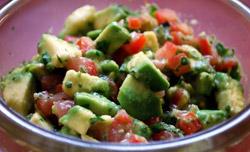
Avocado’s B-vitamin levels help the immune cell s to destroy harmful invaders – as does glutathione, a powerful substance that boosts the action of the body’s natural killer cells.
Last but not the least, they contain the plant chemical beta-sitosterol which is particularly beneficial to the prostrate gland.
Recipe : Avocado Salsa
Nutritional Value (approx.)
Energy
Protein
Carbohydrate
Fat
659
10 g
40 g
60 g
Ingredients :-
ü Ripe Avocados – 2, smal
ü Fresh Coriander, chopped –
ü 2 tbsp
Spring onions – 8 sticks
ü Lemon Juice – 2 tbsp
ü Tomato, finely chopped – 1
ü Salt and Pepper – to taste
Method :-
◊ Peel, stone and finely dice avocadoes.
◊ Finely chop and combine with the avocadoes, tomato, lemon juice and coriander leaves.
◊ Season with salt and pepper and serve.
~ ~ ~ ~ ~
BANANA
In the traditional medicine of India, this golden fruit is regarded as nature’s secret of perpetual youth. To this day, banana is known for promoting healthy digestion and creating a feeling of youthfulness. They help promote the retention of calcium, phosphorus and nitrogen – al of which then
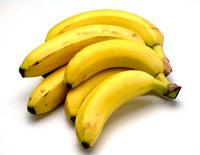
Nutritional Value (100 gms)
work to build sound and regenerated tissues. Calorie
89
Banana also contains invert sugar, which is Protein
1.09 g
an aid to youthful growth and metabolism.
Carbohydrate
22.84 g
Fat
0.33 g
Banana soothes the stomach. Strengthens Fiber
2.6 g
the stomach lining against acid and ulcers and lab tests show that bananas can act like antibiotics. Very high in potassium, thus may help regulate high blood pressure.
Banana is used as a dietary food against intestinal disorders because of its soft texture and blandness. It is said to contain an unidentified compound cal ed, perhaps jokingly, ‘vitamin U’ (against ulcer). It is the only raw fruit, which can be eaten without distress in chronic ulcer cases.
It neutralizes the over-acidity of the gastric juices and reduces the irritation of the ulcer by coating the lining of the stomach.
Ripe bananas are highly beneficial in the treatment of ulcerative colitis, being bland, smooth, easily-digestible and slightly laxative and they relieve acute symptoms and promote the healing process.
Bananas are of great value both in constipation and diarrhea as they normalize colonic functions in the large intestine to absorb large amounts of water for proper bowel moments.
Mashed banana together with little salt is a very valuable remedy for dysentery. They are also useful in the treatment of arthritis and gout.
Being high in iron content, bananas are beneficial in the treatment of anaemia. They stimulate the production of haemoglobin in the blood.
The fruit is very useful for those who are al ergic to certain foods and who suffer in consequence from skin rashes or digestive disorders or asthma.
Unlike other protein foods, many of which contain an amino-acid which these persons cannot tolerate and which causes al ergy, bananas contain only benign amino-acids which in most cases are not al ergic. The fruit, however, does cause al ergic reactions in certain sensitive persons and they should avoid it.
Bananas are valuable in kidney disorder because of their low protein and salt content and high carbohydrate content. They are useful in uremia, a toxic condition of the blood due to kidney congestion and dysfunction.
(Those who are suffering from kidney failure because of high blood potassium should not take the fruit.)
Bananas are considered useful in the treatment of tuberculosis; the juice of the plantain or the ordinary cooked bananas works miracles in the cure of tuberculosis.
Juice from Banana stem is a well -known remedy for urinary disorders. It improves the functional efficiency of kidney and liver thereby al evliating the discomforts and diseased condition in them. It clears the excretory organs in the abdominal region of toxins and helps to eliminate them in the form of urine. It has been found to be of great help in the removal of stones in the kidney, gal bladder, and prostate.
Cooked banana flower eaten with curd is considered an effective medicine for menstrual disorders like painful menstruation and excessive bleeding.
A plaster is prepared by beating a ripe banana into a fine paste. It can be spread over burns and wounds and supported by a cloth bandage. It gives immediate relief. The young tender leaves of banana tree form a cool dressing for inflammations and blisters.
It helps in the recovery from depression and edginess, prevents muscular cramps, improves blood circulation, prevents clot formation and increases heart beat in cases of heart weakness.
Its richness in zinc is helpful in strengthening the hair and prevention of baldness. In external use, it is an effective remedy against warts.
Precautions – Banana, taken as a table fruit, must be thoroughly ripe as otherwise it cannot be digested in the small intestine- which then ferments in the large intestine, often causing wind. Raw bananas contain 20 to 25 per cent starch. But during the process of ripening, this starch is almost wholly converted into assimilable sugar.
Bananas should never be kept in a refrigerator as low temperature prevents their ripening. Those who are suffering from kidney failure because of high blood potassium should not take the fruit.
Recipe : Banana And Walnut Tea Loaf
Nutritional Value (approx.)
Energy
Protein
Carbohydrate
Fat
2600
39 g
300 g
149 g
Ingredients :-
ü Butter, softened – 100 gms,
ü Walnuts – 100 gms plus extra for greasing
ü Bananas, mashed – 2
ü Sugar 140 gms
ü Milk – 2 tbsp
ü Eggs, lightly beaten – 2
ü Self-raising flour – 225 gms
Method :-
◊ Heat oven to 180°C/Gas 4. Grease and line a 900g loaf tin.
◊ Cream the butter and sugar, and then add the eggs.
◊ Set aside 25 g walnuts, then fold the rest into the creamed mixture with the bananas and milk.
◊ Fold in the flour. Spoon into the tin and sprinkle over the reserved walnuts.
◊ Bake for 55 mins-1 hr until risen. Let stand for 10 minutes, then turn out, remove the paper and leave to cool.
~ ~ ~ ~ ~
ASPARAGUS
Asparagus is more than just a green vegetable served as a side dish. It’s also been recognized historical y for its medicinal properties. Down through the ages this popular veggie has been used as a diuretic to reduce water retention and as a laxative due to its high fiber content.
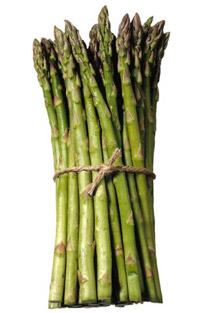
Even though you won’t find asparagus sold in a drugstore, this popular veggie has some interesting health properties that make it a good addition to almost any diet.
Nutritional Value (100 gms)
Calorie
20
Having an extra order of asparagus may Protein
2.2 g
help to protect against unsightly varicose Carbohydrate
3.88 g
veins. Asparagus is a good source of a Fat
0.12 g
flavonoid compound cal ed rutin. Rutin not Fiber
2.1 g
only has anti-inflammatory properties, but it also helps to improve circulation and strengthen veins and tiny blood vessels known as capillaries – all of which reduce the appearance of varicosities.
Asparagus helps to reduce the risk of heart disease in several ways. It’s a good source of potassium to normalize blood pressure, and folate another nutrient important for heart health. It’s also rich in soluble fiber to help lower blood cholesterol levels. Asparagus also lowers cholesterol by another mechanism – saponins. Natural saponins found in asparagus bind to cholesterol in the digestive tract so that it’s less readily absorbed into the bloodstream. It also alters liver metabolism of cholesterol in a favorable way. All in all, asparagus is one heart friendly vegetable.
Asparagus is a vegetable you can eat without guilt. At twenty-seven calories per cup, it’s hard to eat too much of this low calorie veggie. Use it as a side dish instead of potatoes and you’l get more food for fewer calories – and more nutrients too!
Asparagus is an excel ent source of folate, a vitamin that’s important for reducing the risk of neural tube defects in an unborn baby. Asparagus is a good source of vitamins A and C, antioxidant vitamins that help to protect the skin from free radical damage. Vitamin C is also important for maintaining collagen, a component that gives skin its support structure and prevents sagging.
Asparagus extract may help to prevent hangovers. It seems that asparagus extract boosts enzymes in the liver that break down alcohol.
Unfortunately, you’d have to eat the leaves rather than the stalks to get this benefit – or else take an extract.
Asparagus helps in menstrual cramps and is a great food to help treat depression. It has been known to increase the success rate of chemo therapy and helps in getting rid of warts.
The high alkalinity of this wonder juice is effective in reducing the acidity of the blood and helps cleanse the tissues and muscles of waste. A unique phytochemical in asparagus that produces anti-inflammatory effect helps relieve arthritis and rheumatism.
The healthful minerals in asparagus juice make it an important diet for people who are control ing their blood sugar levels. However, it is not to be taken by people with advanced kidney diseases. The diuretic effect of asparagus juice helps relieve premenstrual swelling and bloating. The magnesium in this wonder juice also helps relieve irritability, fatigue, depression, etc.
Caution – Excessive intake of asparagus causes certain uric acid related problems, like gout and kidney stones. Asparagus gives a foul odor to urine.
Recipe : Asparagus Soup
Nutritional Value (approx.)
Energy
Protein
Carbohydrate
Fat
772
28.34 g
44.82 g
57.18 g
Ingredients :-
ü Butter – 2 tbsp
ü Milk – 2 cups
ü Flour – 2 tbsp
ü Fresh Asparagus – 400 gms
ü Salt – ½ tsp
ü Water – enough to boil
ü Pepper powder – ¼ tsp
Method :-
◊ To make the white sauce, melt butter in a saucepan over low heat.
◊ Blend in flour, ½ tsp salt and ¼ tsp pepper.
◊ Stir until smooth. Add milk, cook, stirring constantly, until mixture thickens and begins to bubble.
◊ Set aside.
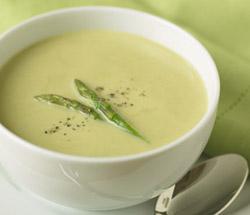
Method :-
◊ Wash asparagus and cut in ½ inch pieces.
◊ Cook asparagus in a small amount of boiling water until tender, about 5 minutes.
◊ Drain, reserving the cooking liquid. Set aside a few of the asparagus tips or pieces aside for garnish, if desired.
◊ Mash or blend remaining asparagus; set aside.
◊ Add enough boiling water to cooking liquid to make 1 cup; add white sauce and pureed asparagus.
◊ Heat thoroughly; season to taste with salt and pepper. Add whole asparagus pieces and serve.
~ ~ ~ ~ ~
BEETROOT
Beet greens are a very good source of calcium, iron, Vitamins A and C, an excel ent source of folic acid, fiber, manganese and potassium. Beet greens and beetroot are a good source of phosphorus, magnesium, iron and vitamin B6. Betacyanin is the pigment that gives beetroot its color, and has powerful antioxidant properties.
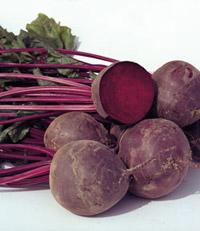
Nutritional Value (100 gms)
Beet fiber has been shown to have Calorie
43
cholesterol lowering capabilities.
Protein
1.61 g
Beetroot juice has been shown to lower Carbohydrate
9.56 g
Fat
0.17 g
blood pressure in subjects with normal blood Fiber
2.8 g
pressure. Betaine, a nutrient found in beets lowers plasma homocysteine, a possible risk factor for cardiovascular disease and also supports healthy liver function. When the liver is functioning properly, fats are broken down efficiently, aiding weight loss, and preventing fatigue and nausea.
Preliminary tests suggest that beetroot ingestion can be one of the useful means to prevent lung and skin cancer. Other studies have shown that beet juice inhibits the formation of cancer causing compounds called nitrosamines. Folate, nitrates, magnesium and antioxidants in beet juice, beet fiber and beet greens have been shown to aid in disease prevention and control as wel as colon and stomach cancer prevention. The red pigment in beets raises antioxidant enzyme levels in the liver and may promote detoxification in the intestines, blood and liver. Colon cancer research has also shown that consumption of beet fiber may increase colonic CD8 cel s, which detect and remove abnormal cells.
Beet juice also inhibits the production of nitrosamines from foods containing nitrates in stomach cancer patients. For beets to be most useful in cancer prevention they should be taken uncooked or very lightly cooked as heat reduces their anti-cancer properties. Folate is considered an important aid in maintaining a healthy pregnancy. It is critical at times of rapid cell development as it is necessary for creating DNA and RNA.
The high level of folate (up to 136 grams per cup) in beets makes them a valuable food for pregnancy. Spina bifida and anencephaly are two birth defects which may be prevented by the consumption of folate rich foods.
Magnesium is an important mineral in healthy bone production and maintenance. Without appropriate levels of magnesium, calcium cannot be utilized effectively. Beet root is high in magnesium, making it a good vegetable for women concerned with preventing osteoporosis. A word of caution; beet greens are high in oxalic acid which interferes with calcium metabolism, so the greens should not be consumed in any significant quantities by osteoporosis sufferers.
Alzheimer’s disease and senile dementia are two types of cognitive disorders. Antioxidants have been shown to be useful in the prevention of these cognitive problems. Dark skinned vegetables such as beets are high in those antioxidants known to lower the levels of free radicals in the body which are, in part, responsible for cell damage in the brain as well as other parts of the body. While all of this information about the value of beets may lead some to consider it to be the next new superfood, it is important to keep some perspective. Many other fresh fruits and vegetables have similar properties so it makes sense to include a variety of these foods in the diet to maintain optimum health.
Beets are of great therapeutic value. They have properties to clean the kidneys and gall bladder. Being rich in alkaline elements, potassium, calcium, magnesium and iron, they are useful in combating acidosis and aid the natural processes of elimination. Red beet juice is associated with human blood and blood forming qualities. Due to its higher content of iron, it regenerates and reactivates the red blood cells, supplies fresh oxygen to the body and helps the normal function of vesicular breathing i.e. normal breath sound. It is thus extremely useful in the treatment of anaemia.
Beet juice is beneficial in the treatment of jaundice, hepatitis, nausea and vomiting due to biliousness, diarrhoea and dysentery. Adding a teaspoonful of lime juice to this juice increases its medicinal value and can be given as a liquid food in these conditions. Fresh beet juice mixed with a tablespoonful of honey taken every morning before breakfast helps the healing of gastric ulcer.
Leaves of beet root, eaten as green-leafy vegetable and its juice, mixed with lime juice, are also valuable in jaundice and gastric ulcer. The juice should be taken once daily. The cellulose content of the beet acts as a bulk residue, increases peristalsis. Its regular use thus prevents habitual constipation. A decoction of the beet root is highly valuable in chronic constipation and haemorrhoids, i.e. piles.
The beet juice is an excel ent solvent for inorganic calcium deposits. It is, therefore, valuable in the treatment of hypertension, arteriosclerosis, heart trouble and varicose veins. The beet juice, in combination with the juice of carrot and cucumber, is one of the finest cleansing material for kidneys and gall bladder. It is highly beneficial in al disorders relating to these two organs.
The water in which beet roots and tops have been boiled is an excellent application for boils, skin inflammation and outbreaks of pimples and pustules. The white beet is better for this purpose. For an irritable skin the body should be sponged down occasional y with a mixture of three parts of beet water to one part of white vinegar. This mixture is also useful as a skin wash in cases of measles and eruptive fevers. The decoction of beets mixed with little vinegar can be used externally to cleanse scurf or dandruff from the head. For dandruff, the beet water should also be massaged into the scalp with the ginger tip every night.
Recipe : Hot Beet Soup
Nutritional Value (approx.)
Energy
Protein
Carbohydrate
Fat
336
8 g
49 g
15 g
Ingredients :-
ü Onion, peeled, chopped – 1
ü Olive oil – 1 tbsp
ü Garlic, crushed – 1 clove
ü Tomatoes – 400 gms
ü Chili Powder – 1 tsp
ü Beetroot – 2
ü Sour cream – to serve
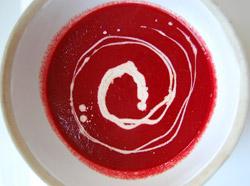
Method :-
◊ Preheat the oven to 200°C / 400°F / gas mark 6
◊ Wrap each beetroot in foil and bake for about 45 minutes until tender.
◊ Leave them to cool and then peel and dice.
◊ Sauté the garlic and onions over a low heat in the olive oil for 3 minutes.
◊ Add the chili powder, stir together for a minute.
◊ Add tomatoes and bring to the boil.
◊ Simmer for 15 minutes before stirring in the beetroot.
◊ Pour the soup into bowls, add some sour cream and serve.
~ ~ ~ ~ ~
BITTER GOURD
Bitter Gourd, also known as balsam apple, bitter-melon and balsam pear, is renowned in the Old World tropics for its medicinal properties. From India to the Federated States of Micronesia, and from China to the
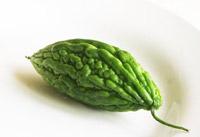
Nutritional Value (100 gms)
Solomon Islands, this bitter fruit is part of Calorie
17
medicinal folklore as wel as an exotic, Protein
1 g
acquired taste.
Carbohydrate
3.7 g
The New World is slowly beginning to Fat
0.2 g
Fiber
2.8 g
discover for itself the ability of this versatile fruit to treat diseases as old as diabetes and as new as HIV/AIDS.
Bitter gourds are very low in calories but dense with precious nutrients. It is an excel ent source of vitamins B1, B2, and B3, C, magnesium, folic acid, zinc, phosphorus, manganese, and has high dietary fiber. It is rich in iron, contains twice the beta-carotene of broccoli, twice the calcium of spinach and twice the potassium of a banana.
Bitter gourd juice is highly beneficial for treating blood disorders like blood boils and itching due to toxemia.
Bitter melon contains a hypoglycemic compound (a plant insulin) that is highly beneficial in lowering sugar levels in blood and urine. Bitter melon juice has been shown to significantly improve glucose tolerance without increasing blood insulin levels.
Regular consumption of bitter gourd juice has been proven to improve energy and stamina level. Even sleeping patterns have been shown to have improved/stabilized.
The high beta-carotene and other properties in bitter gourd make it one of the finest vegetable-fruit that help alleviate eye problems and improving eyesight. Bitter melon juice may be beneficial in the treatment of a hangover for its alcohol intoxication properties. It also helps to cleanse and repair and nourish liver problems due to alcohol consumption.
This bitter juice can also help to build your immune system and increase your body’s resistance against infection. To hasten healing, use the paste of the roots of bitter melon plant and apply over the piles.
Regular consumption of this bitter juice has also been known to improve psoriasis condition and other fungal infections like ring-worm and athlete’s feet. Drink it daily to improve asthma, bronchitis and pharyngitis.
Bitter gourd contains beneficial properties that cleanse the blood of toxins. It is also helpful in getting rid of jaundice for the same reasons.
The bitter gourd has excellent medicinal virtues. It is antidotal, antipyretic tonic, appetizing, stomachic, antibilious and laxative.
The seeds became a cure-al of sorts, finding their way into remedies for conditions as different and unrelated to each other as mumps, lumbago (low back pain), breast cancer and piles. Juice from crushed leaves was a liver tonic and menstrual regulator; crushed flowers and roots were cough remedies and asthma fix-its.
Bitter gourd is a blood purifier, activates spleen and liver and is highly beneficial in diabetes. It is a purgative, appetizer, digestive, anti-inflammatory and has healing capacity.
With the juice of bitter gourd you can massage the affected portion and also eat bitter gourd to cure joint pains.
Daily intake of a tea spoon of bitter gourd juice, continued for a few days, destroys stomach worms.
Recipe : Stuffed Bitter Gourd
Nutritional Value (approx.)
Energy
Protein
Carbohydrate
Fat
368
39 g
50 g
4 g
Ingredients :-
ü Bitter Gourd(Peeled ,
ü Oil for deep frying washed deseeded and deep
ü Red Chili powder – to taste fried) – 5
ü Turmeric powder – ¼ tsp
ü Paneer- 250 gms
ü Coriander leaves – 1 tbsp
ü Onion – 1 medium
ü Garam Masala – ½ tsp
ü Tomato – 1 medium
ü Salt to taste
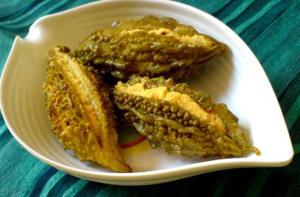
Method :-
◊ Crumble the paneer & add to it the spices (salt & red pepper)
◊ Now fil the gourds with this paneer.
◊ Take little oil in Karahi (wok) & fry chopped onions till transparent.
◊ Now add chopped tomatoes & fry for just a minute.
◊ Add the dry spices in the tomatoes (salt, pepper, turmeric).
◊ Add the stuffed gourd to the Karahi & mix well
◊ Make sure the stuffing doesn’t come out. If there is little paneer left put it in along with gourd.
◊ Let it be on medium flame for 10 minutes. Fold in occasionally.
◊ Now add chopped coriander & Garam masala & serve hot as a side dish with Roti / Rice.
~ ~ ~ ~ ~
BOTTLE GOURD
Bottle gourd is one of the favorite vegetable of Indians and has numerous health benefits. They are especially good for aged people.

The cooked vegetable is cooling, diuretic, sedative and anti bilious. It gives a feeling of relaxation after eating. However, bottle gourd should not be eaten in a raw state as it may prove
Nutritional Value (100 gms)
harmful for stomach and intestines.
Calorie
12
Bottle gourd is very valuable in urinary Protein
0.2 g
disorders. It serves as an alkaline mixture. It Carbohydrate
2.5 g
should be given with sulpha drugs in the Fat
0.1 g
Fiber
0.6 g
treatment of urinal infection. It acts as an alkaline diuretic in this condition.
The juice of bottle gourd is a valuable medicine for excessive thirst due to severe diarrhea, diabetes and excessive use of fatty or fried foods. Its use during summer prevents excessive loss of sodium, quenches thirst and helps in preventing fatigue.
The mixture of bottle gourd juice and sesame oil acts as an effective medicine for insomnia. It should be massaged over scalp every night. The cooked leaves of bottle gourd are also beneficial in the treatment of insomnia.
Cooked bottle gourd is cooling, calming, diuretic and easy to digest. It is also effective against constipation and other digestive disorders. It carries the potential for breaking calculus (stones) in body. This vegetable is very good for balancing liver function. It is often recommended by ayurvedic physicians when the liver is inflamed and cannot efficiently process food for maximum nutrition and assimilation.
Drink bottle gourd juice once daily early in the morning for treating graying hair. The juice is useful in treating insanity, epilepsy & other nervous diseases.
Recently, bottle gourd has attracted a lot of attention due to its importance in treatment of blood pressure and heart disease.
The pulp around the seed is emetic and purgative. A poultice of the crushed leaves should be applied to the head to treat headaches. The flowers are an antidote to poison. The stem, bark and the rind of the fruit are diuretic. The fruit is antilithic, diuretic, emetic and refrigerant.
Recipe : Bottle Gourd Chutney
Nutritional Value (approx.)
Energy
Protein
Carbohydrate
Fat
195
25 g
35 g
7 g
Ingredients :-
ü Bottle gourd – 1/2
ü Salt – to taste
ü Garlic – 3 cloves
ü Oil – 1 tsp
ü Red chili, dry – 3 (Depends
For tempering:
on your spice tolerance)
ü Mustard seeds and Urad dal
ü Tomato, ripen – 1 – ½ tsp each
ü Coriander leaves – 3 to 4
ü Curry leaves – a sprig
Method :-
◊ Remove the skin of bottle gourd and cut it into pieces.
◊ Cut tomato into pieces.
◊ Crush the garlic cloves and remove the skin. Keep all this aside.
◊ Heat oil in a pan. Add red chilies and crushed garlic cloves, fry til garlic turns into golden brown.
◊ Add bottle gourd pieces and fry for 3 to 5 minutes.
◊ Add Tomato pieces and fry again for 3 to 5 minutes.
◊ Final y add coriander leaves, curry leaves and salt. Remove from heat.
◊ Once it cools off, grind this in a blender or in a food processor.
◊ Transfer it to a serving bowl.
◊ For the tempering: heat a teaspoon of oil in a pan. Add Mustard seeds and Urad dal. Once it splutters, add curry leaves and fry for 30 seconds. Pour this mix to the ground chutney.
~ ~ ~ ~ ~
BENGAL GRAM
Bengal gram is one of the most important pulses in India. It is consumed in the form of whole dried seeds and in the form of dhal, prepared by splitting the seeds in a mil and separating the husk. Seeds are angular with pointed beak and small hilum. Al parts of the plant are covered with glandular hairs.
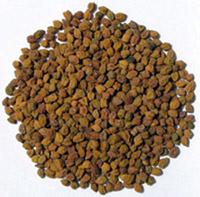
Nutritional Value (100 gms)
Soaked in water overnight and chewed in Calorie
360
Protein
17.1 g
the morning with honey, the whole gram Carbohydrate
60.9 g
seed acts as a general tonic. The liquid, Fat
5.3 g
obtained by soaking the seeds and then Fiber
3.9 g
macerating them, also serves as tonic.
Sprouted Bengal grams supply plenty of B-complex and vitamins.
Cooked germinated gram is a wholesome food for children and invalids.
However excessive use of Bengal gram causes indigestion and may precipitate urinary calcium due to high concentration of oxalic acid and form urinary stone of calculi.
Experiments have shown that the intake of water extract of Bengal gram enhances the utilization of glucose in both the diabetic and normal persons. Liberal usage of Bengal gram extracts, have shown considerable improvement in fasting blood sugar levels, glucose tolerance, urinary excretion of sugar and general health.
Fresh juice of Bengal gram leaves is a very rich source of iron. It is therefore, highly beneficial in the treatment of iron deficiency and anaemia.
An acidic liquid is obtained by collecting the dew drops from the leaves by spreading a thin white cloth over the crop at night or by any other means.
This acidic liquid contains about 94 per cent malic acid and 6 per cent oxalic acid and is used medicinal y. It is a valuable astringent useful in dyspepsia, vomiting, indigestion, costiveness, diarrhea and dysentery.
A bath prepared by putting an entire Bengal gram plant in hot water is highly beneficial in painful menstruation. It may be taken in the form of a sitting steam bath.
Bengal gram flour is a very effective cleansing agent and its regular use as a cosmetic bleaches the skin. In al ergic skin diseases like eczema, contact dermatitis, scabies, washing the skin with this flour will be highly beneficial. The Bengal gram flour can be beneficial y used in the treatment of pimples.
Washing hair with Bengal gram flour keeps them clean, soft and free from hair diseases. Flour of the puffed Bengal gram is a very nutritive food and an effective remedy for impotency and premature ejaculation. For better results, two tablespoonful of this flour should be mixed with sugar, powdered dates and skimmed milk powder. It can be packed in airtight tins and used when required.
Recipe : Chana Dal Rice
Nutritional Value (approx.) (approx.)
Energy
Protein
Carbohydrate
Fat
1175
38 g
139 g
58 g
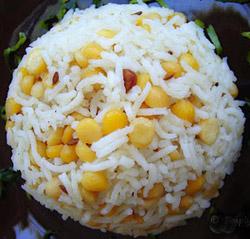
Ingredients :-
ü Rice – 1 cup
ü Salt – to taste
ü Chana Dal – ½ cup
ü Onion, chopped – 1
ü Peanuts – 1 tsp
ü Water – 2 cups
ü Oil – 3 tbsp
ü Mustard seeds – 1 tsp
ü Garlic, chopped – 1 tbsp
ü Black Pepper powder – 3 tsp
ü Ginger, chopped – 2 tbsp
ü Curry leaves – 6
Method :-
◊ Wash chana dal and soak for 5-6 hours.
◊ Wash rice and soak for 1 hour.
◊ Heat oil in a pan. Add mustard seeds and let them crackle.
◊ Add garlic, ginger and onion and sauté till the onions turn light brown.
◊ Add the chana dal, curry leaves and 2 tbsp water. Sauté it for 2 minutes.
◊ Add the rice with two cups of water and salt.
◊ Add black pepper when it starts boiling.
◊ Cover and cook on medium flame til done, stirring at regular intervals.
Method :-
◊ Serve hot, garnish with chopped coriander leaves.
~ ~ ~ ~ ~
BLACK-EYED BEAN
Not only Black-eyed beans are low in fat and high in quality protein, but they also have the added bonus of soluble fiber’s disease-preventing qualities. The soluble fiber in beans dissolves in water, trapping bile acids in its gummy goo. This lowers blood levels of damaging LDL cholesterol, especial y if LDL cholesterol levels were high to begin with, without compromising the level of protective

Nutritional Value (100 gms)
HDL cholesterol.
Calorie
341
Protein
21.6 g
Because beans are singled out for their Carbohydrate
62.3 g
soluble fiber, you may not realize they also Fat
1.42 g
provide substantial insoluble fiber, which Fiber
15.2 g
helps combat constipation, colon cancer, and other conditions that afflict your digestive tract.
Insoluble fiber absorbs water, which swell s the size of stool, puts pressure on the intestines, and moves everything along faster. To help combat the gas problem — caused by indigestible carbohydrates — let your body get used to eating beans. Start slowly, eating only small amounts at first, and try to eat them when you know you’ll be active afterward; it helps break up the gas.
Black-eye peas contain several types of phytochemicals. They are rich in lignans, which may play a role in preventing osteoporosis, heart disease, and certain cancers. The flavonoids in beans may help reduce heart disease and cancer risk. Phytosterols, also found in legumes, help reduce blood cholesterol levels. Black-eyed peas provide a number of nutrients, are a rich source of fiber and can be used in a number of recipes. For vegetarians, such beans can provide a needed source of iron. No matter how you choose to prepare them, black-eyed peas can be a wonderful supplement to your healthy eating plan. The common commercial one is called the California Blackeye; it is pale-colored with a prominent black spot.
Recipe : Black-Eyed Bean Rice
Nutritional Value (approx.)
Energy
Protein
Carbohydrate
Fat
769
37 g
134 g
13 g
Ingredients :-
ü Black-Eyed Bean, cooked –
ü Juice of 1 lemon 350 gms
ü Chili powder – ½ tsp
ü Basmati rice, cooked – 150
ü Cumin seeds – ½ tsp gms
ü Fresh Coriander, chopped –
ü Spring onions, chopped – 5 2 tbsp
ü Olive oil – 2 tsp
ü Salt, pepper – to taste
ü Water – 2 tbsp
Method :-
◊ Gently fry the onions in the oil until golden.
◊ Add al the remaining ingredients, apart from the rice, stir and
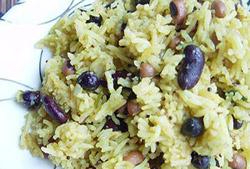
heat through for 2 minutes.
◊ Add the rice and pepper and stir-fry for a further 2 minutes.
◊ Serve hot.
~ ~ ~ ~ ~
BROWN RICE
Brown rice is an excel ent source of magnesium, iron, selenium, manganese, and the vitamins B1, B2, B3, and B6. Brown rice is a good source of dietary fiber, protein, and gamma-oryzanol. White rice is brown rice that has had essential nutrients removed when processed in order to make it easier and faster to cook,
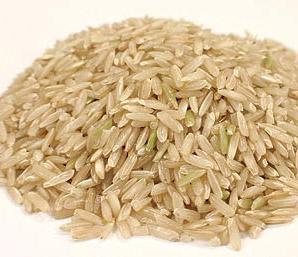
Nutritional Value (100 gms)
and to give it a longer shelf life. This is Calorie
362
accomplished by removing the bran, and Protein
7.5 g
with it, minerals and vitamins that are Carbohydrate
76.17 g
necessary in our diet.
Fat
2.68 g
Fiber
3.4 g
Inositol hexaphosphate, a natural y occurring molecule found in high-fiber foods such as brown rice, is a compound that has been shown to demonstrate cancer prevention properties. Inositol hexaphosphate holds great promise in strategies for the prevention and treatment of cancer.
Pancreatic cancer is an extremely virulent form of cancer with few effective treatments. An in vitro study has suggested that inositol hexaphosphate may be a therapy for treatment of pancreatic cancer.
Brown rice has a rich content of manganese, which helps in the production of energy from carbohydrates and protein. The nutrient also plays a key role in the synthesis of fatty acids, which is necessary for a healthy nervous system. One can get about 88% of the daily need of manganese by consuming just one cup of brown rice.
The manganese present in brown rice is also required for the antioxidant enzyme, super oxide dismutase, which protects the mitochondria against the free radicals formed during energy production.
Brown rice is a rich source of fiber and selenium, both of which help lower the risk of colon cancer significantly. Selenium also works with vitamin E, in several antioxidant systems of the body, which help fight against heart diseases. This is also beneficial against the symptoms of asthma and rheumatoid arthritis.
The rice also contains insoluble fiber, which helps women avoid developing gall stones. It is rich in fiber, which contributes towards the reduction of cholesterol level and also the prevention of atherosclerosis.
The fiber also binds to the cancer-causing chemicals, protecting the body against colon cancer. The fiber present in brown rice also helps normalize the bowel function and thus, reduces constipation.
The oil present in brown rice helps in lowering the cholesterol level in the body. Brown rice is extremely good for postmenopausal women with complains of high blood pressure, high cholesterol, and other symptoms of cardiovascular diseases.
It contains phytonutrients, which are highly beneficial for sound health.
Brown rice is abundant in plant lignans, which get converted into mammalian lignans like enterolactone, in the intestine. Enterolactone is highly protective against breast and other.
The rice helps in reducing the risk of insulin resistance and the metabolic syndrome. Metabolic syndrome is associated with symptoms like visceral obesity, high triglycerides, high blood pressure and low level of defensive HDL cholesterol.
Brown rice reduces the risk of type 2 diabetes. Brown rice is a good source of magnesium, which reduces the severity of asthma, lowers the frequency of migraine headaches and decreases the risk of heart attack and stroke. Magnesium balances the action of calcium and thus, helps in regulating nerve and muscle tone.
Brown rice offers major protection against breast cancer, especial y in pre-menopausal women. Intake of brown rice can help the body fight against childhood asthma. It is also protective against obesity, ischemic stroke and insulin resistance.
Caution – Brown rice is not seen to have any negative effect on the body, including any allergic effect. It does not contain any significant amount of oxalates and purines. However, the rice that is not grown organically is seen to contain traces of arsenic. Though low doses of arsenic are not seen to cause any serious diseases, its heavy intake can make one more susceptible to the risk of cancer. So, always go for the organically grown brown rice, as it is free of arsenic content.
Recipe : Brown Rice Pudding With Sultanas And Almonds
Nutritional Value (approx.)
Energy
Protein
Carbohydrate
Fat
860
100 g
135 g
30 g
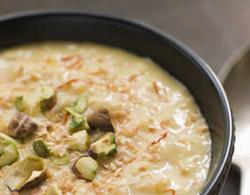
Ingredients :-
ü Brown Rice – 75 gms
ü Grated nutmeg – ½ tsp
ü Milk – 900 ml
ü Butter – 15 gms
ü Sugar – 25 gms
ü Ginger – ½ inch
ü Sultanas – 75 gms
ü Flaked almonds – to garnish
Method :-
◊ Wash the rice and cook for 15 minutes.
◊ Drain the water and again boil it with milk and the sugar.
◊ Pour into a buttered oven proof dish.
◊ Add the sultanas and stir.
◊ Sprinkle over the nutmeg and dot with butter.
◊ Cook in the oven, at 180 degree Celsius for 1 ½ -2 hours, stirring twice.
◊ Sprinkle with chopped ginger and flaked almonds.
◊ Serve.
~ ~ ~ ~ ~
ALMOND
Chewing a few almonds seems to relieve heartburn because of their high oil content.
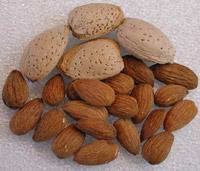
Eating almonds is supposed to lower the risk of cancer and to lower cholesterol. The high calcium level of almonds may lower the risk of colon and rectal cancers. The high levels of antioxidant flavonoids in the almond skin help to inhibit the oxidation of low density
Nutritional Value (100 gms)
Calorie
575
lipoproteins, thereby reducing the formation Protein
21.22 g
of plaques in the arteries. The extracted oil, Carbohydrate
21.67 g
which is edible and has a nutty taste, is used Fat
49.42 g
to clear the skin of spots.
Fiber
12.2 g
Both the sweet and bitter varieties of almonds have quite a few medicinal qualities when used in the right way. Sweet almonds are very high in protein. Both types of almonds reduce inflammation and are used in the treatment of bronchitis. In addition to being an excellent source of protein, as mentioned above, almonds are also a source of healthy fat, zinc, potassium, iron, B vitamins, and magnesium.
Almonds are also known to aid respiration, act as a digestive aid and even can help with urinary problems.
The medicinal virtues of almonds help the formation of new blood cells, haemoglobin and play a major role in maintaining the smooth physiological functions of brain, nerves, bones, heart and liver. The almond is thus highly beneficial in preserving the vitality of the brain, in strengthening the muscles and in prolonging life. It forms a vital part of all tonic preparation in Ayurveda and Unani Medicines.
Paste of almond with milk, cream and fresh rose bud’s paste prevents early appearance of wrinkles, black heads, dryness of the skin, pimples and keeps the face fresh. A teaspoonful of almond oil mixed with a teaspoonful of amla juice, massaged over scalp, is a valuable remedy for falling hair, thinness of hair, dandruff and premature graying of hair.
Almonds should be consumed properly for beneficial results. The skin of almonds should always be removed before use as it contains irritating properties. This can be done by soaking them in water for one or two hours.
Almonds contain copper in organic form at the rate of 1.15 mg per 100 grams. The copper along with iron and vitamins acts as a catalyst in the synthesis of blood haemoglobin. Almonds are therefore, a useful food remedy for anaemia.
The use of almonds has proved highly beneficial for the treatment of chronic constipation. It is an excel ent laxative. 11 to 15 kernels taken at bed time wil facilitate a clear motion the next morning. Those who suffer from weak stomach can take seven grams of almond oil with hot milk.
Wild almonds are considered useful in skin diseases, especial y eczema.
In case of inflammatory condition of the skin, the external application of almond oil wil ease the pain and cool the heat.
An emulsion of almonds is useful in bronchial diseases, hoarseness and tickling cough and is also useful in whooping cough, bronchitis and asthma.
Almonds are very useful in case of loss of sexual energy which usually results from nervous debility and brain weakness. Their regular use will strengthen sexual power. Chewing of equal quantity of almond kernels and roasted gram also helps in restoring sexual vigor.
Recipe : Cherry Almond Loaf
Nutritional Value (approx.)
Energy
Protein
Carbohydrate
Fat
3353.5
60.17 g
346.17 g
200.5 g
Ingredients :-
ü Refined Flour – 1 cup
ü Glazed Cherries – 1 cup
ü Oil – ½ cup
ü Almonds, chopped roughly –
ü 100 gms Powdered sugar – 3/4 cup
ü Vanilla essence – 3 drops
ü Eggs – 4
ü Baking Powder – 2 tsp
Method :-
◊ Grease and dust a baking tin.
◊ Pre heat the oven at 150°C, 300°F.
◊ Sieve the flour and baking powder 2-3 times and keep aside.
◊ Keeping aside a few cherries and almond for garnishing, lightly mix the rest of them with the sieved flour.
◊ Beat sugar and eggs in a pan till frothy.
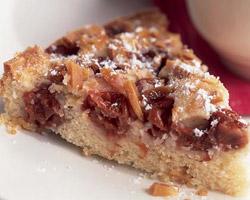
Method :-
◊ Add oil gradual y and keep beating all the time.
◊ Add the flour to the batter. Beat well .
◊ Add essence and mix well.
◊ The batter should be quite thick but it should be such that it can be spooned out.
◊ Put the batter in the prepared tin. Sprinkle the chopped fruits on top.
◊ Bake in the oven for an hour.
◊ Pancake is done. Remove from the oven.
◊ Let it cool for 10 minutes and then remove the tin.
◊ Serve warm.


~ ~ ~ ~ ~
GLOSSARY
A
Addison’s disease
Addison’s disease (also chronic adrenal insufficiency, hypocortisolism, and hypocorticism) is a rare endocrine disorder wherein the adrenal glands produce insufficient steroid hormones (glucocorticoids and mineralocorticoids). It’s general y diagnosed via blood tests and medical imaging.Treatment involves replacing the absent hormones.
Aduki beans
An annual vine widely grown throughout East Asia and the Himalayas for its smal (approximately 5 mm) bean.
Albedo of an orange
The spongy white layer of the orange peel.
Alterative
Tending to alter or produce alteration.
Amaranth
Amaranthus, col ectively known as amaranth, is a cosmopolitan genus of herbs originating in the American continent. Approximately 60 species are recognized, with inflorescences and foliage ranging from purple and red to gold.
Amphoteric
In chemistry, an amphoteric substance is one that can react as either an acid or base.
Amygdalin
Is a glycoside extracted from almond or apricot kernel
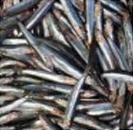
Amyloidosis
Refers to a variety of conditions in which amyloid proteins are abnormal y deposited in organs and/or tissues.
Amyotrophic Lateral Sclerosis
A form of motor neuron disease. ALS is a progressive, fatal, neurodegenerative disease caused by the degeneration of motor neurons, the nerve cell s in the central nervous system that control voluntary muscle movement.
Analgesic
An analgesic (also known as a painkil er) is any member of the group of drugs used to relieve pain.
Anchovies
Anchovies are a family of smal , common salt-water forage fish. There are about 140 species in 16 genera, found in the Atlantic, Indian, and Pacific Oceans. Anchovies are usual y classified as an oily fish.
Anencephaly
Anencephaly is a cephalic disorder that results from a neural tube defect that occurs when the cephalic (head) end of the neural tube fails to close, usual y between the 23rd and 26th day of pregnancy, resulting in the absence of a major portion of the brain, skull, and scalp. Children with this disorder are born without a forebrain, the largest part of the brain consisting mainly of the cerebral hemispheres. The remaining brain tissue is often exposed—not covered by bone or skin.
Anthocyanin
Versatile and plentiful flavonoid pigments found in red/purplish fruits and vegetables, including purple cabbage, beets, blueberries, cherries, raspberries and purple grapes.
Antiatherogenic
see Atherogenic
Antidote
A substance which can counteract a form of poisoning
Antiedemic
see Edema
Antiemetic
see Emetic
Antiestrogenic
see Estrogen
Antifibrosis
see Fibrosis
Antilithic
Tending to prevent the formation of urinary calculi, or to destroy them when formed.
Antimetastic
see Metastasis
Antimutagenic
see Mutagen
Antineoplastic
see Neoplastic
Antioxidant
An antioxidant is a molecule capable of slowing or preventing the oxidation of other molecules. Oxidation is a chemical reaction that transfers electrons from a substance to an oxidizing agent. Oxidation reactions can produce free radicals, which start chain reactions that damage cel s. Antioxidants terminate these chain reactions by removing free radical intermediates, and inhibit other oxidation reactions by being oxidized themselves.
Antiproliferant
see Proliferate
Antipyretic
see Pyorrhea
Antispasmodic
see Spasm
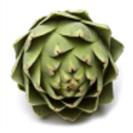
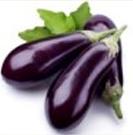
Antithelmintic
A medication capable of causing the evacuation of parasitic intestinal worms.
Aphrodisiac
Is a substance that increases sexual desire
Apoptosis
Process of programmed cel death that may occur in multicel ular organisms.
Arteriosclerosis
Stiffening of arteries.
Artichoke
The Globe Artichoke is a perennial thistle originating in Southern Europe around the Mediterranean. The edible portion of the buds consists primarily of the fleshy lower portions of the involucral bracts and the base, known as the “heart”; the mass of immature florets in the center of the bud is cal ed the “choke”. These are inedible in older larger flowers.
Atherogenic
Referring to the ability to initiate or accelerate atherogenesis—the deposition of atheromas, lipids, and calcium in the arterial lumen.
Atherosclerosis
Condition in which an artery wall thickens as the result of a build-up of fatty materials such as cholesterol.
Aubergine
Also known as eggplant, brinjal, melongene is commonly used as a vegetable in cooking. It is native to Nepal, India, Bangladesh, Pakistan, and Sri Lanka.
B
Becker Muscular Dystrophy
An inherited disorder characterized by slowly progressive muscle weakness of the legs and pelvis.

Biliary Atresia
A rare condition in newborn infants in which the common bile duct between the liver and the smal intestine is blocked or absent.
Biliary Cirrhosis
An autoimmune disease of the liver marked by the slow progressive destruction of the smal bile ducts the liver.
Biliary Stricture
An abnormal narrowing of the common bile duct, the tube that moves bile (a substance that helps with digestion) from the liver to the smal intestine.
Biliousness
Excess secretion of bile
Botulism
A rare but serious paralytic illness caused by botulinum toxin, which is produced by the bacterium Clostridium botulinum.
The toxin enters the body in one of four ways: by colonization of the digestive tract by the bacterium in children (infant botulism) or adults (adult intestinal
toxemia), by ingestion of toxin from foodstuffs (foodborne botulism) or by contamination of a wound by the bacterium (wound botulism).
All forms lead to paralysis that typical y starts with the muscles of the face and then spreads towards the limbs. In severe forms, it leads to paralysis of the breathing muscles and causes respiratory failure.
Buckwheat
The crop plant, common buckwheat, is Fagopyrum esculentum. Tartary buckwheat (F. tataricum Gaertn.) or “bitter buckwheat” is also used as a crop, but it is much less common. Despite the common name and the grain-like use of the crop, buckwheat is not a cereal or grass. It is called a pseudocereal to emphasize that it is not related to wheat.
Bulimia
Bulimia nervosa is an eating disorder characterized by recurrent binge eating, followed by compensatory behaviors. The most common form is defensive vomiting, sometimes cal ed purging; fasting, the use of laxatives, enemas,
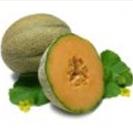
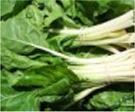

diuretics, and over exercising are also common.
Bursitis
Occurs when one or more bursae – smal , fluid-fil ed sacs that cushion the joints – get irritated and inflammed.
C
Cachexia
Cachexia or wasting syndrome is loss of weight, muscle atrophy, fatigue, weakness and significant loss of appetite in someone who is not actively trying to lose weight.
Canderel Sweetener
An artificial sweetener.
Cantaloupe
The fruit names cantaloupe and muskmelon are used somewhat interchangeably. Cantaloupes have a smooth and lumpy skin with deep ridges.
Carminative
An agent that prevents or relieves flatulence (gas in the gastrointestinal tract)
Chard
Chard also known by the common names Swiss Chard, Silverbeet, Perpetual Spinach, Spinach Beet, Crab Beet, “Butt beet”, Seakale Beet and Mangold, is a leafy vegetable, and is one of the cultivated descendants of the sea beet.
Although the leaves are eaten, it is in the same species as beetroot (garden beet) which is usual y grown primarily for its edible roots.
Chayote
The chayote is an edible plant that belongs to the gourd family. The chayote fruit is used in both raw and cooked forms.
Cholagogue
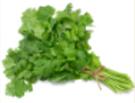

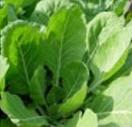
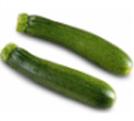
A medicinal agent which promotes the discharge of bile from the system, purging it downward.
Chorea
An abnormal involuntary movement disorder, one of a group of neurological disorders cal ed dyskinesias.
Cilantro
Equivalent of coriander.
Coeliac disease
An autoimmune disorder of the small intestine that occurs in genetically predisposed people of all ages. Symptoms include chronic diarrhoea, failure to thrive (in children), and fatigue.
Colander
A bowl-shaped kitchen utensil with holes in it used for draining food such as pasta.
Collard
Col ard (also known as tree-cabbage or nonheading cabbage), is a cool-season vegetable green that is rich in vitamins and minerals. It is a popular substitute for cabbage.
Courgette
Courgette is the British, and particularly the New Zealand name for zucchinis. People in the UK may refer to courgettes as vegetable marrows. People are most likely familiar with courgettes that are long green oblongs, resembling a cucumber.
Crohn’s disease
Crohn’s disease is an ongoing disorder that causes inflammation of the digestive tract, also referred to as the gastrointestinal (GI) tract. It can affect any area of the GI tract, from the mouth to the anus, but it most commonly affects the lower part of the small intestine, called the ileum. The swelling extends deep into the lining of the affected organ. The swelling can cause pain and can make the intestines empty frequently, resulting in diarrhea.
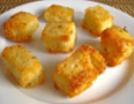
Croup
A group of respiratory diseases that often affect infants and children under age 6. It is characterized by a barking cough; a whistling, obstructive sound (stridor) as the child breathes in; and hoarseness due to obstruction in the region of the larynx. Another type of croup is known as spasmodic croup. People with spasmodic croup first catch a cold, rarely with fever, and then the croupy cough begins.
Croutons
Smal pieces of sautéed or rebaked bread, often cubed and seasoned, that is used to add texture and flavor to salads, accompaniment to soups, or eaten as a snack food.
Cystinuria
An inherited autosomal recessive metabolic disorder that is characterized by the formation of cystine stones in the kidneys, ureter, and bladder.
Cystitis
Inflammation of the urinary bladder
Top 5 Herbs that Help Support a Healthy Immune System
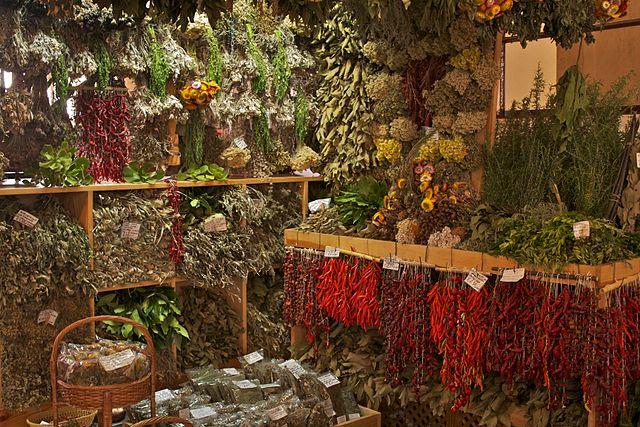
The more we grow older the more we are concerned about our immune system. The functionality and effectiveness of an immune system is what determines, the quality of life of a person.
Therefore, living healthy and finding other healthy ways to boost the stability of our immune system is the most important news that many people want to hear. Indeed, that good news is what this article intends to give you.
Have you thought of natural herbs that can boost the health of your body?
If not, then, consider this article a gift to you to improve your health.
The top five herbs not only give you an active functioning immune system but also help prevent other diseases that could harm your health.
1.
Turmeric – a Must for Your Health and Immune System
One of those herb that you need to appreciate and take notice is Turmeric.
A lot of research studies have demonstrated the power of turmeric in fighting depression, soothing your stomach and gut, as well as managing pain.
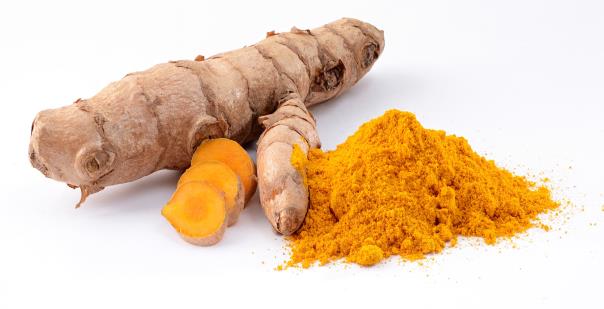
The active ingredient curcumin in Turmeric plays a critical role in enhancing your immune system not only an anti-inflammatory substance but also provides therapeutic agents that treats diseases such as inflammatory bowel disease, arthritis, pancreatic, chronic anterior uveitis, and cancer.
Now you know, Turmeric is not just your ordinary aromatic spice but rather an effective immune system herb that keeps diseases at bay.
2
The second powerful Herb is Myrrh
Myrrh is the other powerful detoxifier, which rids your body of toxic metals such lead.
The yellowish-Orange active oil in Myrrh contains Terpenoid and Sesquiterpenes.
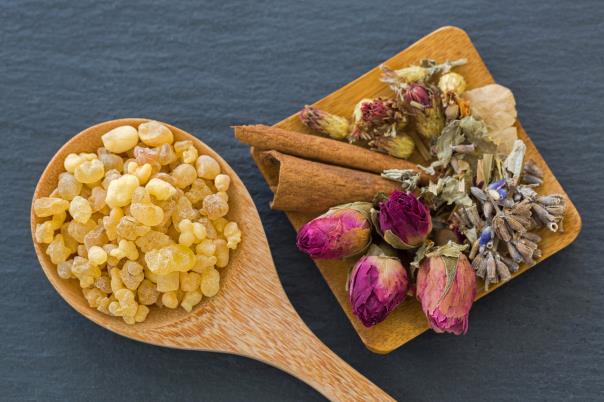
Terpenoids in particular help in preventing fats and other metabolites in plants against oxidation.
Sesquiterpenes on the other hand contains powerful antibacterial and antifungal properties that helps in purifying and cleansing your body.
Try Myrrh today and see your immune system stable and strong.
3
The Third Herb – Frankincense
Frankincense not only helps to balance your mind, body, and soul but also helps in calming anxiety and stress.
The resourceful oils in frankincense facilitate transmission of messages to the limbic system of the brain.
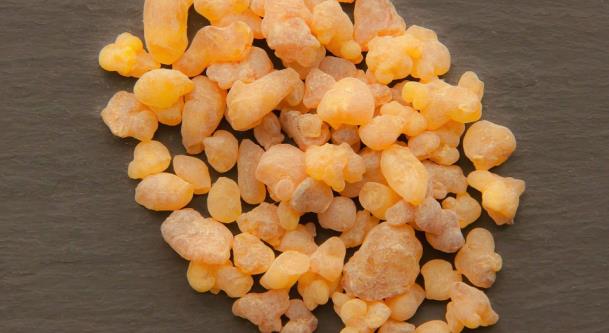
Frankincense exhibits a powerful anti-microbial effect against harmful bacteria and viruses.
As if that is not enough, frankincense further helps to manage your pain and support an all-around health lifestyle.
4
The Forth Herb – Echinacea
Echinacea is an all-important herb as all parts of the plant offers unique therapeutic agents.
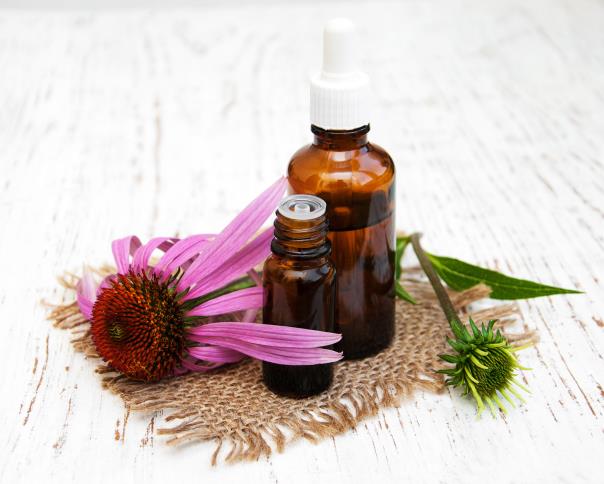
It’s roots for example, contains the highest concentration levels of volatile oils, while the flowers and the leaves contain higher amounts of polysaccharides, which plays a role in keeping the immune system in check Echinacea is a well-known remedy for treating common cold and it is extracted from the Eastern Purple Coneflower.
5
The Fifth Herb – Astragalus
Astragalus comes from the legume family and comes with at least 200 active ingredients just meant for your immune system.
Saponins, flavonoids, and polysaccharides are the most active ingredients in Astragalus.
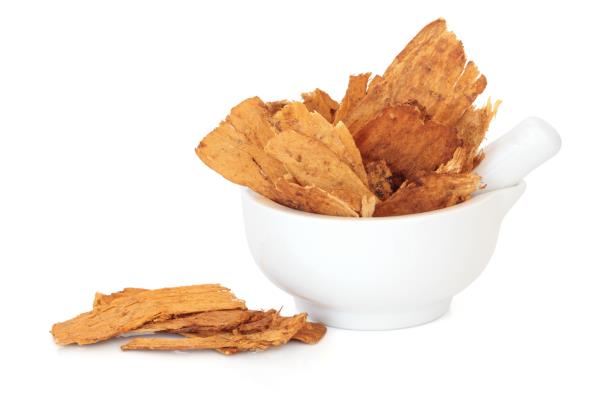
The herb offers protection against physical damage caused by free radicals, toxins, and viruses.
Saponins helps in supporting healthy cholesterol levels as well as rid the body of abnormal cell growth and offers extra boost to the immune system.
Summary
These 5 herbs are all a powerful ally for you to improve your immune system and health. As they are good for your body and soul, they also have a big impact on your weight.
If you have better health, you will have much easier for losing weight. When your body is in a good healthy state, it will help you find your ideal weight automatically.
Get your health in check, by consuming healthy herbs as these 5 mentioned above and you will start to look and feel fantastic.
Share this content:
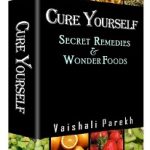

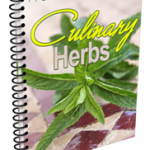
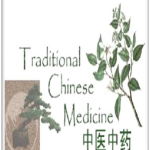








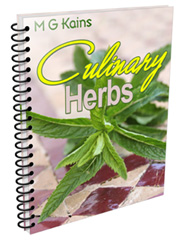
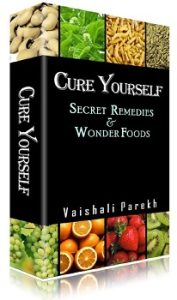






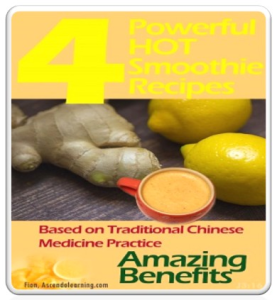




Post Comment